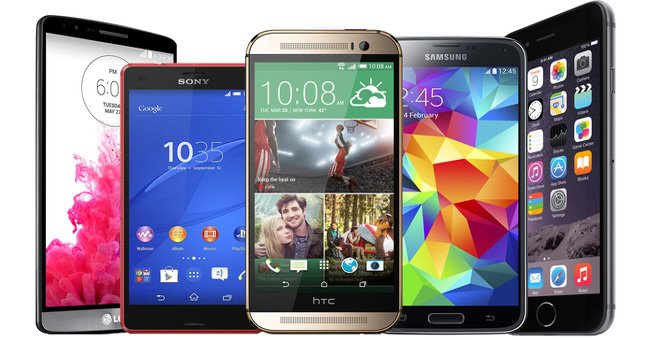The number of features in a smartphone are increasing at an exponential rate every year. From using the GPS in your phone to track your location to the fingerprint scanners for security, the list of features is endless. While there are plenty of exciting features already in a smartphone, get ready to have your mind blown by these exciting features that your phone may have in 2017.
1.Wireless Charging

Most smartphone users know how inconvenient charging your smartphone can be with wires. In some cases, you to have to be near the socket to be able to use your phone while it is charging. Wireless charging is the next big thing in the world of charging, you can now charge your phone without any inconvenient wires.
Features of wireless charging –
- It works on the principle of inductive charging where an electromagnetic field is used for energy transfer
- This mode of charging is more durable
- Convenient method of charging your device
2.Dropping the headphone jack (Wireless headphones)

Have you ever had a headphone whose wires always seemed to get tangled or pops out from your ear at the slightest tug, like it has a mind of its own? If yes, then you will find the concept of wireless headphones very exciting. These headphones are connected to your smartphone through wireless networks like Bluetooth. They allow you to listen to music or watch movies in a convenient manner.
Features of Wireless headphones –
- They are battery operated and hence require charging
- No wires to cause inconvenience
- Stylish and trendy
- Connect to devices through wireless networks like Bluetooth
3.Dual Displays

Dual smartphone displays are based on the dual screen feature on computers that made working on multiple tasks easy. Dual screens on a smartphone refers to the additional secondary screen that always remains in the on state, so you can configure it to display date and time when the primary display is off. It can also show you incoming calls or messages when the primary screen is being used.
Features of Dual Displays –
- Incoming calls show up on the secondary screen if you working on a task
- Can display time and date for convenience
- Can be configured to show app shortcuts and tools
4. Pressure Sensitive Displays

The Pressure sensitive display is a new technology which can determine the amount of pressure you apply on a touch screen. The pressure will act as an input for the operating system to execute different tasks depending on the amount of force exerted.
Features of Pressure sensitive displays –
- Tasks on your smartphone can be executed based on the pressure exerted
- You can execute various tasks simply by pressing your fingertips on the screen
5. 4K Screens

4K screens in your smartphone provide you with Ultra HD display at your fingertips. A 4K display will allow you to take pictures and capture videos in stunning detail. These displays were initially limited to computers and television, but with the recent advancement in technology smartphones can now have 4K displays.
Features of 4K screens –
- Capture photos and videos in stunning details
- It renders your videos and images very sharp
- 4K screens consume more battery power
6. Iris Scanners

A security feature in smartphones, Iris scanners directs Near-Infrared (NIR) Rays to the eyes which allow it to recognize an individual’s iris. Once the iris is recognized, the smartphone unlocks itself. These scanners depend on the different ligament patterns in the iris to recognize a one’s iris.
Features of Iris scanners –
- Scans the patterns in your iris to unlock the phone
- Much more secure compared to fingerprint sensors as iris patterns are less susceptible to change
7. LiFi

LiFi or light fidelity is a new technology that provides internet connectivity by using light as the medium. For a smartphone to make use of this technology will require modifications. A light sensor has to be integrated into the build of the smartphone to support LiFi.
Features of LiFi –
- Uses the visible light spectrum to facilitate internet connectivity
- LiFi has more data density as compared to WiFi
- The rate of data flow is higher than WiFi


